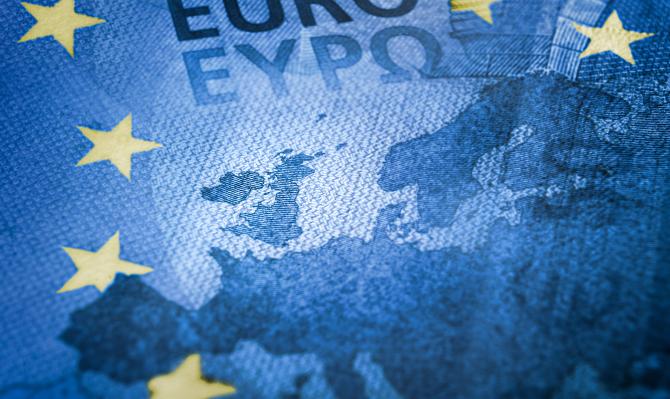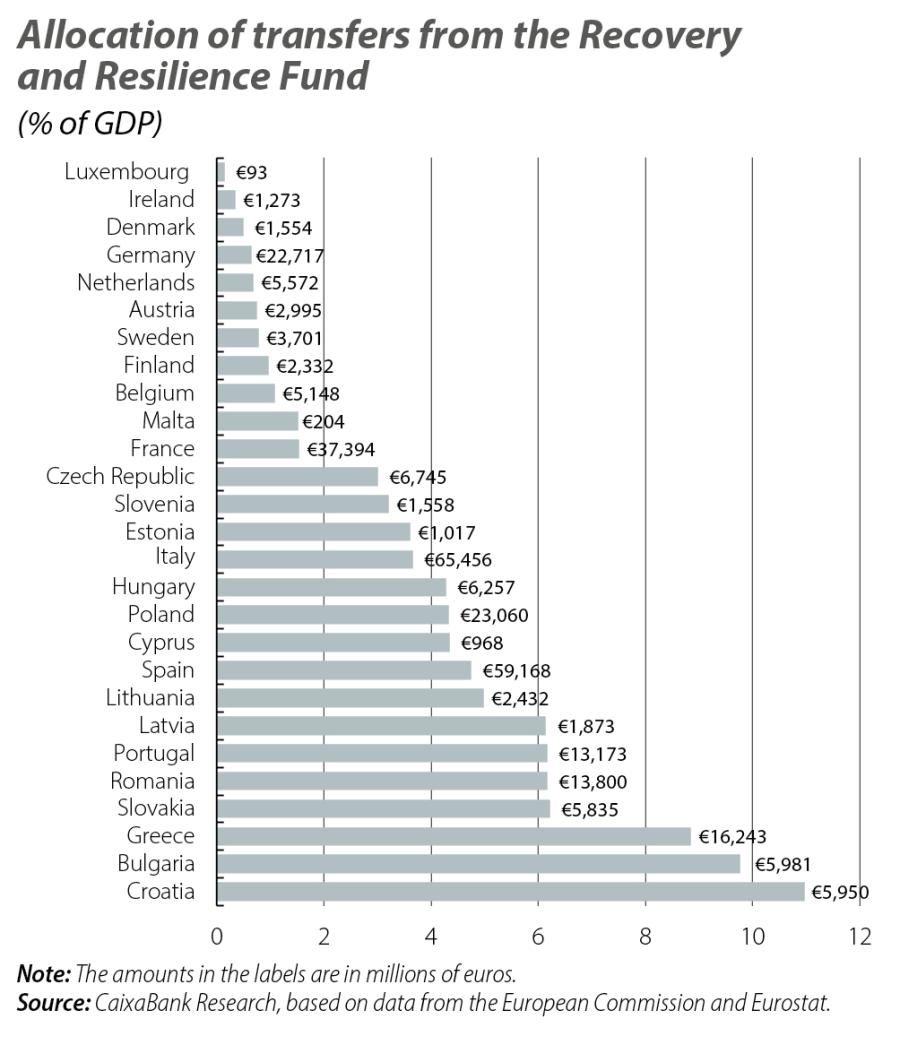Everything you ever wanted to know about the European Recovery Plan but were afraid to ask
What exactly is the NGEU and how will it work? We answer the questions most frequently asked about this European Recovery Fund, its approval and implementation schedule, criteria and allocation of funds.

- The Recovery Plan must still be approved by the European and national parliaments.
- The main element is the Recovery and Resilience Facility, which will provide up to 312.5 billion euros in grants and 360 billion in loans to Member States according to their size and the impact of the COVID-19 crisis.
- To access these funds, each country must prepare a national recovery plan, which will be evaluated by the European Commission.
- The first disbursements, representing 10% of the total for each country, should occur in Q3 2021.
In July, after intense negotiations, the European Council agreed on the European Recovery Plan, known as Next Generation EU (NGEU). Through this plan, the EU will grant up to 750 billion euros to its Member States to boost the European economy’s recovery following the shock of the COVID-19 pandemic. What exactly is the NGEU and how will it work? Below we answer the frequently asked questions about the Plan, the timetable for its approval and implementation, the conditions attached to it and the distribution of the funds.
NGEU is a new European instrument with a budget of 750 billion, created to support Member States’ efforts to respond to the COVID-19 crisis and to boost the EU’s green and digital transition. It is additional to the European budget for 2021-2027.
Its main component is the Recovery and Resilience Facility, which will provide 312.5 billion euros in grants and 360 billion in loans to EU Member States to finance investment projects and reforms that boost the recovery and improve the resilience of their economies. Furthermore, it will provide additional funds for European initiatives such as ReactEU and the Just Transition Fund, which are aimed at supporting employment and mitigating the socio-economic impact of the green transition in the most affected regions, respectively.
In the remainder of the article, we will focus on the Recovery Facility, which constitutes the bulk of NGEU.

Although NGEU has been agreed at a political level by the European Council, it still requires the approval of the European Parliament and its ratification by the national parliaments of the countries whose constitution requires it. The Recovery Plan is based on an increase in the EU’s own resources ceiling, and it is this decision that must be ratified by the national parliaments. This increase in the own resources ceiling will allow the EU to issue European debt in the markets to finance the fund.1
The negotiations with the European Parliament are under way. There are still differences over the rule of law conditionality mechanism (the Parliament wants a strong mechanism that allows for the suspension of disbursements to countries that violate the rule of law), as well as on the introduction of new own resources.2 Nevertheless, we can expect the European Parliament to give its approval soon and the ratification process by the various national parliaments to be completed during the first half of 2021. Although this is somewhat later than originally expected, it should not delay the disbursements to Member States.
In parallel, EU countries must draw up national recovery plans and detail both the investment projects they will finance with the European funds and the reforms that will accompany them. The deadline for submitting the final national plans is 30 April 2021. Once received, the Commission will have up to two months to assess them and recommend their approval to the European Council, which in turn will have a maximum of four weeks to approve them. Although national plans can be sent earlier (as soon as the Recovery Plan is approved by the European and national parliaments), most countries are likely to wait until well into 2021 in order to adjust the final version according to the economic scenario. Furthermore, sending the plans at the same time as most other countries will allow them to avoid individual scrutiny. The whole process should thus be completed by mid-2021, and the EU could begin to disburse the first tranche of funds in the third quarter (10% of the total funds that each country will receive).
- 1. The own resources ceiling is the maximum legal amount that the EU can request from Member States to fund the European budget. The increase in this ceiling serves as a guarantee for the issue of European debt and is necessary in order for the debt that is issued to obtain the maximum rating.
- 2. The European budget’s resources have barely changed for more than 30 years and are mainly based on direct contributions from Member States (according to their size), customs taxes and transfers of a percentage of the VAT collected by each country. The European Parliament would like to introduce new resources linked to European targets, such as taxes on digital services or the carbon content of imports.
Of the 312 billion euros of transfers, 70% will be distributed to each country according to its GDP, population and level of unemployment between 2015 and 2019. The remaining 30%, meanwhile, will be calculated in 2022 taking into account the drop in GDP suffered by each country in 2020 and 2021. According to the Commission’s current forecasts, it is estimated that Spain and Italy could receive some 60 billion euros (4.8% and 3.7% of GDP, respectively)3 from the Recovery Facility, France some 30 billion (1.3% of GDP), Portugal 13 billion (6.2% of GDP) and Germany some 20 billion (0.6% of GDP). The countries that would receive the most funds as a proportion of their GDP are Croatia, Bulgaria and Greece (see chart).
- 3. The 72 billion which Spain expects to receive from the EU includes 12.5 billion from the ReactEU fund.

Each country will also be able to borrow up to 6.4% of its GNI4 to finance part of its investments and reforms, although it is quite possible that Member States will opt not to use the full amount of these loans. This is because, while they may be low-interest loans, they would increase the recipient countries’ public debt. Several European countries may therefore choose to apply for them only in the event that the crisis deteriorates, since they have several alternatives available: EU countries also have access to ESM loans, which have fewer conditions attached, as well as to sovereign debt markets at historically low interest rates.
As we have already mentioned, once their national plans have been approved, each country will receive 10% of the funds from the Resilience and Recovery Facility. The remaining disbursements will occur depending on the achievement of objectives and the progress made with the reforms and investment projects detailed in the national plans. On this basis, according to the Commission itself, most of the funds will be disbursed between 2023 and 2024, and the final disbursements will occur before the end of 2026. However, some countries may receive slightly more than the initial 10% in 2021 if they succeed in making progress on certain projects and reforms. This is what Spain is aiming for, as it expects to receive some 27 billion in 2021 (see the Focus «Next Generation EU: a golden opportunity for the Spanish economy»).
- 4. Gross national income (GNI) measures the final production of goods and services generated by a country’s national residents and enterprises, even if they are located abroad.
In order for the European Council to approve the various national plans, and so that the funds can begin to be disbursed, those plans must be coherent with the recommendations that each country received from the Commission as part of the European Semester (specifically those of 2019 and 2020). Moreover, the reforms and investments should contribute towards four general objectives: promoting the EU’s economic, social and territorial cohesion; strengthening economic and social resilience; mitigating the social and economic impact of the current crisis; and supporting the green and digital transitions. These contributions should be detailed in the national plans with figures that estimate the plan’s impact in these areas. Upon receiving the respective national plans, the European Commission will assess whether the conditions have been met. Following the Commission’s recommendation, the European Council will have to approve each plan individually by a qualified majority.
Beyond the initial 10% disbursement, countries will have to move ahead with their reforms and investments and achieve milestones before more funds can be disbursed. In addition, each Member State has the possibility to request an evaluation by the European Council if it considers that another country has not met its milestones. This could delay the disbursement of funds to certain countries, but crucially, no country will have veto power over another country’s recovery plan.